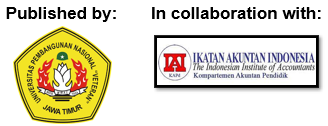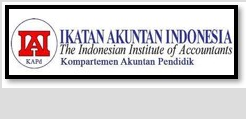The Influence of Perceived Ease of Use on the Intention to Use Mobile Payment: Attitude toward Using as Mediator
DOI:
https://doi.org/10.33005/jasf.v3i1.67Keywords:
attitude toward using, financial technology, intention to use, perceived ease of useAbstract
The purpose of this research is to find out the influence of perceived ease of use, perceived ease of use, and attitude toward using on the intention to use mobile payment and the influence of perceived ease of use on the intention to use mobile payment through attitude toward using as mediation variable for traders at Taman Puspa Raya (TPR) market. Taman Puspa Raya Market
(TPR) is used as an object in this research because there is a shift of payment system to the traders at the TPR market that causes the traders to have similarities in using fintech as payment system alternative. This research uses a quantitative method. The population in this research is 168 traders at the TPR market that using mobile payment as a payment alternative. The number of samples in this research is 45 respondents, and the response rate in is 100%. In this research, data analysis is done by Structural Equation Modeling Partial Least Square (SEM-PLS). The results of this research prove that all hypotheses are accepted. These results indicate another support evidence for the theory of acceptance model (TAM). A suggestion to future researchers is to get closer to the traders before the study is made so that traders will be more proactive and willing to help in the process of filling out the questionnaire so that the data obtained is not biased. Suggestion for traders is traders can be more careful and double-check existing transactions by ensuring that the transaction is successful and there is a notification on the merchant's cellphone.
Downloads
References
Abdillah, Willy & Hartono, J. (2015). Partial Least Square (PLS) - Alternatif Structural Equation Modeling (SEM) dalam Penelitian Bisnis (First; D. Prabantini, Ed.). Yogyakarta: Penerbit ANDI.
Arsanti, T. A. & Yuliasari, E. (2018). Personal factors as predictors of intention to use Information Technology, Jurnal Manajemen dan Kewirausahaan, 20 (2), 129-136, DOI: 10.9744/jmk.20.2.
Ajzen, Icek & Fishbein, M. (1975). Belief, attitude, intention, and behavior : An introduction to theory and research. (May 1975).
Banque De France. (2019). An overview of cashless payment instruments in France. Retrieved September 5, 2019, from Banque De France website: https://www.banque-france.fr/en/financial-stability/monitoring-cashless-payments/overview-cashless-payment-instruments-france
Bintarto, E. A. (2018). Fintech dan Cashless Society: Sebuah Revolusi Pendongkrak Ekonomi Kerakyatan. Essay Booklet; The Transformative Power of Fintech, 2- 19
Chin, W. (1998). The Partial Least Squares Approach for Structural Equation Modeling. Lawrence Erlbaum Associates.
Cho, Yoon C. (2015). Exploring Factors that Affect Usefulness, Ease of Use, Trust, and Purchase Intention in the Online Environment, International Journal of Management and Accounting Systems, 19 (1), First Quarter 2015, 21-36.
Chuang, L.-M., Liu, C.-C., & Kao, H.-K. (2016). The Adoption of Fintech Service: TAM perspective. International Journal of Management and Administrative Sciences (IJMAS), 3(07), 1–15. Retrieved from www.ijmas.orgwww.ijmas.org
Citraland. (2010). Citraland Fresh Market. Retrieved October 13, 2019, from October 22 website: https://www.citralandsurabaya.com/citraland-fresh-market
Danurdoro, K., & Wulandari, D. (2016). The Impact of Perceived Usefulness, Perceived Ease of Use, Subjective Norm, and Experience Toward Student's Intention to Use Internet Banking. Jurnal Ekonomi Dan Ekonomi Studi Pembangunan, 8 (1), 17–22. https://doi.org/10.17977/um002v8i12016p017
Davis, F. D. (1989). Perceived usefulness, perceived ease of use, and user acceptance of information technology. MIS Quarterly: Management Information Systems, 13 (3), 319–339.
Davis, F. D., Bagozzi, R. P., & Warshaw, P. R. (1989). User Acceptance of Computer Technology: A Comparison of Two Theoretical Models. Management Science, 35 (8), 982–1003. https://doi.org/10.1287/mnsc.35.8.982
Dianti, I. (2016). Pengaruh Atribut Produk, Harga, Variety Seeking dan Ketidakpuasan Konsumen Terhadap Keputusan Perpindahan Merek Smartphone di Mataram. Setis, 2 (3), 18-23.
Hair, JFJ; Black, William; Babin, Barry.J; Anderson, R. (1995). Multivariate Data Analysis (Fifth). New Jersey: Upper Saddle River.
Hsu, Chin-Lung; Lin, J. C. C. (2016). Effect of perceived value and social influences on mobile app stickiness and in-app purchase intention. Technological Forecasting and Social Change, 108 (July 2016), 42–53.
Jamaliah, W., Jusoh, W., & Adewale, A. A. (2016). An Examination Factors Influencing The Intention to Adopt Internet Banking Among SMEs in Yemen: Using An Extension of The Technology Acceptance Model (TAM). Journal of Internet Banking and Commerce 21 (November).
Jiwasiddi, A., Adhikara, C., Adam, M., & Triana, I. (2019). Attitude toward using Fintech among Millennials. (26-28 January 2019), 10. https://doi.org/10.4108/eai.26-1-2019.2283199
Krishanan, D., A.A. Khin, K.L.L. Teng, & K. Chinna (2016). Consumers' perceived interactivity & intention to use mobile banking in structural equation modeling, International Review of Management and Marketing, 6 (4), 883-890.
Kumar, K. S., Sivashanmugam, C., & Venkataraman, A. (2017). Intention to use mobile wallet: extention of TAM model, International Journal of Current Engineering and Scientific Research, 4 (12), 5-11.
Ningrum, A. C. (2019). Analisis Pengaruh Modal Usaha, Lama Usaha, dan Jam Kerja terhadap Pendapatan Pedagang Pasar Tradisional Benowo Surabaya. Jurnal Ilmu Ekonomi, 01 (1), 19–33.
Olatokun, W., & Owoeye, O. J. (2012). Influence of Individual, Organizational, and System Factors on Attitude of Online Banking Users. Proceedings of Informing Science & IT Education Conference (InSITE) 2012, 389-403
Santosa, P. I. (2018). Metode Penelitian Kuantitatif (First; Giovanny, Ed.). Yogyakarta: Penerbit ANDI.
Setiaji, S. A. (2019). Penggunaan Mobile Payment di Indonesia Tumbuh. Retrieved September 5, 2019, from bisnis.com website: https://ekonomi.bisnis.com/read/20190613/9/933358/penggunaan-mobile-payment-di-indonesia-tumbuh
Sohn, K. & Kwon, O. (2020). Technology acceptance theories and factors influencing artificial Intelligence-based intelligent products, Telematics and Informatics, 47, April 2020, https://doi.org/10.1016/j.tele.2019.101324.
Stats, I. W. (2019). Asia Internet Use, Population Data, and Facebook Statistics - June 30, 2019. Retrieved September 6, 2019, from https://www.internetworldstats.com/stats3.htm#asia
Suryaningrum, D. H. (2012). Assessing Individual Performance on Information Technology Adoption: A New Competing Model. Global Journal of Business Research, 6 (4), 111-125.
Suyanto, T. A. K. (2019). Faktor yang Mempengaruhi Tingkat Kepercayaan Penggunaan FinTech pada UMKM Dengan Menggunakan Technology Acceptance Model (TAM). Akmenika, 16 (1). Retrieved from https://journal.upy.ac.id/index.php/akmenika/article/view/166
Taherdoost, H. (2018). A review of technology acceptance and adoption models and theories. Procedia Manufacturing, 22, 960-967. https://doi.org/10.1016/j.promfg.2018.03.137.
Unaradjan, D. D. (2019). Metode Penelitian Kuantitatif (First; K. Sitohang, Ed.). Jakarta: Grafindo.
Downloads
Published
How to Cite
Issue
Section
License
Copyright (c) 2020 Maggie Setiawan, Christina Yanita Setyawati

This work is licensed under a Creative Commons Attribution 4.0 International License.














